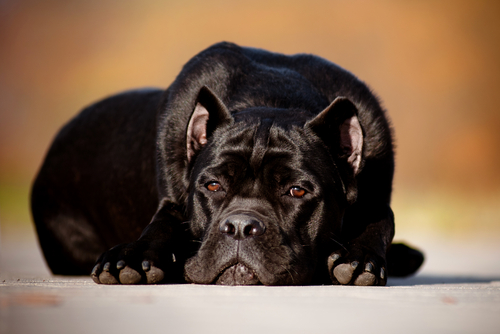How to Help a Dog Overcome Grief Over a Lost Pet


Written and verified by the lawyer Francisco María García
After the death of a pet at home, the owner is not the only suffering. If there’s another dog at home, it’s normal for him to also feel disoriented after losing his friend.
Signs of that a dog is mourning the loss of another pet
If our friend is affected because a pet has left or died, then we notice signs of grief. You will see a sudden lack of appetite or even more affection than normal. Also, a person might seem reserved or unwilling to be social.
Drowsiness and sleeping longer than normal is another sign. And, this applies to people as well as dogs. In light of any of these behaviors, try to make a visit to the veterinarian. The vet should recommend the most appropriate solution.
As we see it, depression is not an illness exclusive to human beings. Our dogs can suffer from it, too.
Canina Psychology

Many veterinarian clinics have professionals that can help the dog overcome extreme sadness. They are usually specialists in the psychological illnesses of pets.
How to help a dog move on after loss
Our job will be encouraging our dog to carry out his favorite activities. Maybe, allow him some privileges that make him happy. For example: let him get up on the sofa with his owners.
Routine is important. Get your dog to his favorite daily activities. Long walks are a suggestion that always makes the majority of dogs happy. Others prefer playing. In those cases we will recover a chew toy or favorite ball. And, we’ll play his favorite game with him.
Go for a leisurely car rides. While many dogs prefer an edible prize, others love riding in the car. Allowing these whims in the first few days of mourning will help comfort the dog little by little.
Be affectionate! Petting and kind words are essential to helping the dog get over this period of mourning. The same thing happens with people. In those moments our dog needs a huge dose of care and physical contact.
Don’t be sad along with your pet
It’s important to remember that animals are very sensitive and also very receptive. They greatly absorb the emotions that we humans emit. This is why it’s very useful to transmit more tranquility than sadness, especially in those moments that are so sad hard for the owner and pet. And that’s what children and other members of the house should do.
If our friend, which considers us his owner and leader, sees that we’re very sad, it will be the best reason for them to be that much sadder still. Even if we feel grief in a deep way, we have to make our pet understand that life goes on. His routine of walks and playing can resume and mutual support must be given.
The dog’s pain of losing a companion

Among the phases that people face in losing a loved one or in any stage of pain, there is a series of easily recognizable stages: denial, anger, internal negotiation, and finally, acceptance.
The pain that dogs and pets experience has different forms and phases. The emotional confusion that they feel is due to changes in their daily life and the loss of their security. It is associated with a change in the structure of the group of dogs, which is their social group. This can cause depression.
If the dog that passed away was the leader, surely the surviving dog feels insecure. His understanding about who is in charge has changed. This will be evident when relating to other individual canines, he may bark incessantly at them. What’s actually happening is that he is trying to affirm a new freedom he’s found or he likely feels threatened and is barking to warn other dogs.
This text is provided for informational purposes only and does not replace consultation with a professional. If in doubt, consult your specialist.